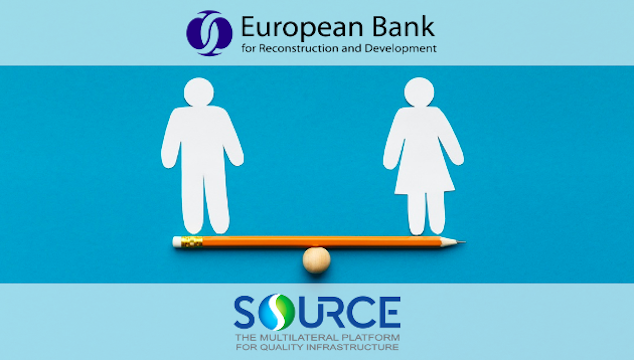Gender inclusive infrastructure was mentioned as a key objective in the European Bank for Reconstruction and Development’s (EBRD) Strategy for the Promotion of Gender Equality 2016-2020 in order to improve access to services. Although infrastructure sector projects may at first appear to benefit everyone equally in a community, men and women may have different needs and priorities in terms of how a service should be designed and delivered, especially where these needs relate to their different economic activities and care responsibilities.
As part of the SOURCE integration process in Ukraine, the EBRD provided support to SIF by contracting a gender expert to reinforce the aspects of gender equality and inclusivity the preparation of infrastructure projects. The objective was to strengthen the existing gender and inclusion related guidance in SOURCE, the multilateral platform for sustainable infrastructure. This assignment included advising the SIF team in the identification of gender and inclusion trigger points and tooltips integrated in the 40 subsector specific standardised project preparation templates. Based on the recommendations of the consultant, new questions and data points were included to ensure the inclusivity of the project preparation process, define targets during the preparation phase as well as measure results during construction, operation and maintenance.
“We are happy to partner with SOURCE to support governments in applying a gender perspective in the preparation of infrastructure projects, such as transport, social, urban services, waste and water, that will have positive benefits both for the service providers and their customers to better achieve and sustain gender equality”.
Sunita Pitamber, Associate Director, Gender Mainstreaming and Access to Services, EBRD.
SOURCE also supports governments in the achievement of all Sustainable Development Goals (SDGs). When the project team indicates that the project aims to contribute to the SDG 5: Achieve gender equality and empower all women and girls, in the stage 1 of SOURCE, specific targets regarding the positive impacts, and mitigation measures for negative impacts requested in the stage 2 as part of the social impact assessment.
These specific targets for gender equality and women’s empowerment include construction impacts, access to services, trainings and employments. Automatic quality assessment of the project documentation may be done across the stages by the Consistency Checks functionality in SOURCE. A red flag indeed appears when a SDG is targeted but not translated into quantified targets as part of the expected positive impacts identified during the project in the appraisal stage. In order to evaluate the effective results of the project against these targets during construction, operation and maintenance, indicators can also be added by the user in order to measure permanent employments created for women within the operation as well as their safe and secure access to services. This upgrade will be available in the new version of the SOURCE templates (v6) that will be deployed in December.

